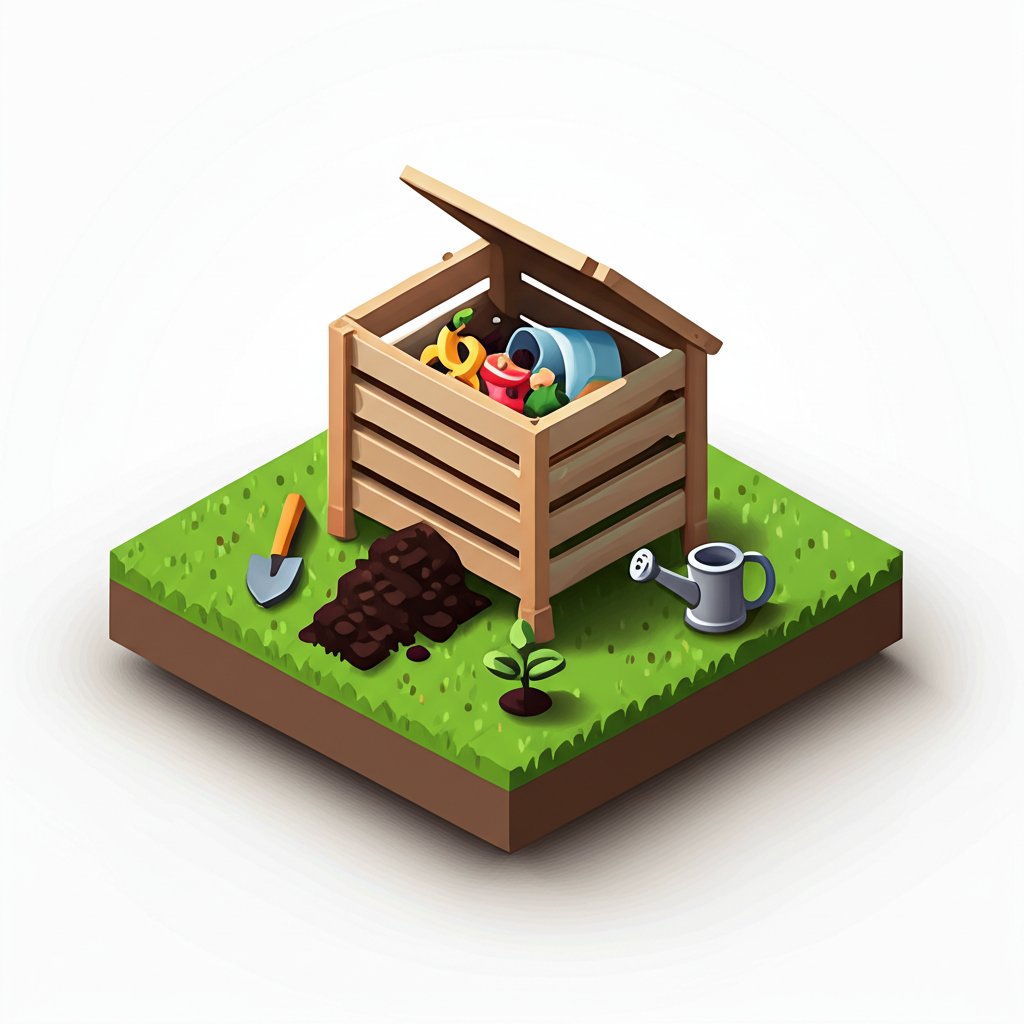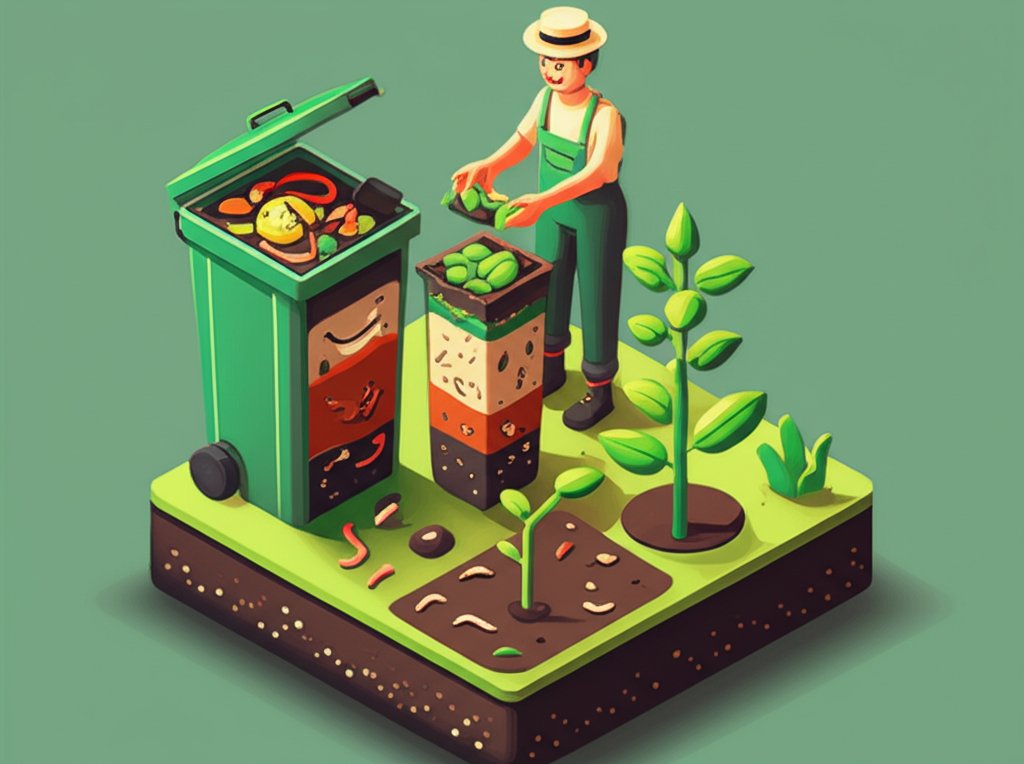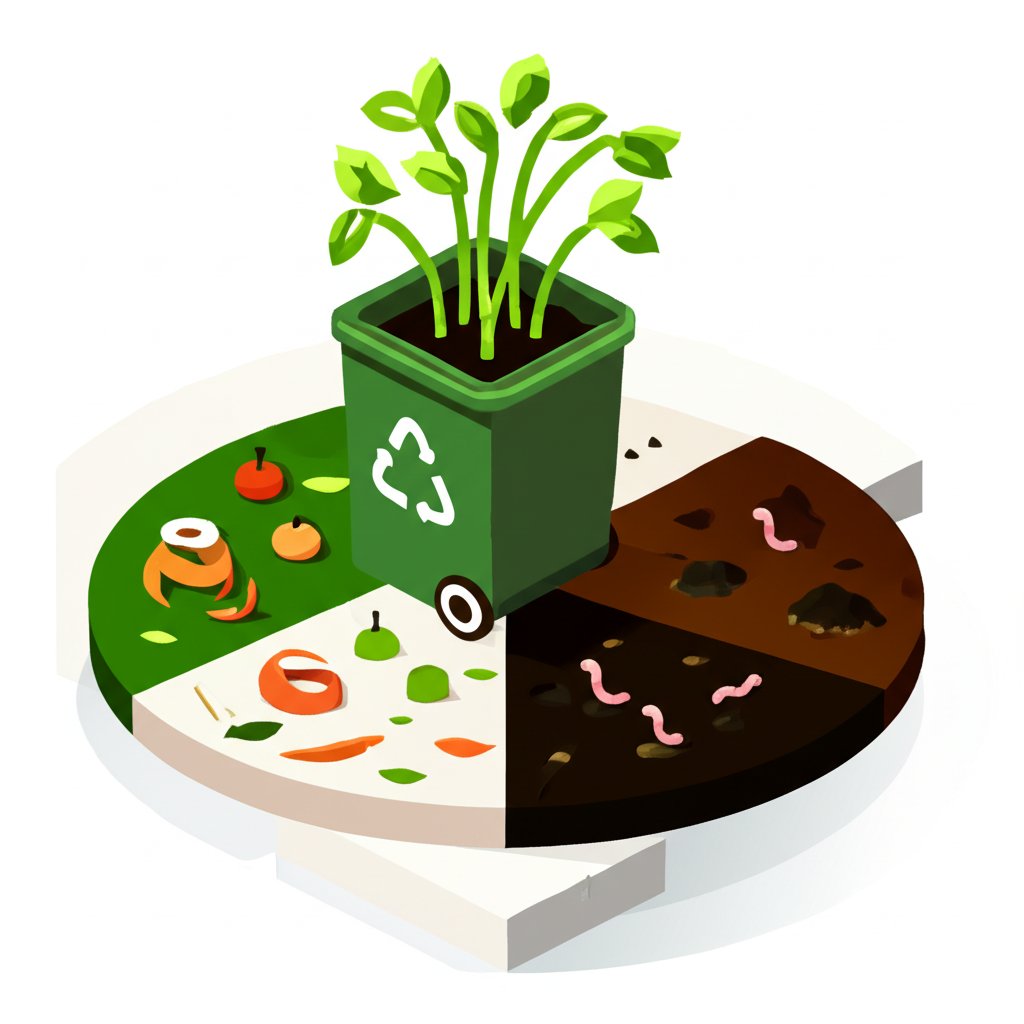Are you ready to transform your garden, lighten your ecological footprint, and cultivate a truly sustainable lifestyle? The secret lies in the ancient, yet profoundly modern, practice of composting. Far more than just a way to manage kitchen scraps, composting is a potent, natural process that unlocks extraordinary advantages. From enriching your soil with vital nutrients to making a quantifiable impact on waste reduction and driving genuine sustainability, the composting benefits are vast and far-reaching, promising a healthier planet for generations to come.
This comprehensive guide will demystify the art and science of composting, equipping you with the knowledge and inspiration to harness its incredible power. We’ll explore how this “black gold” revolutionizes gardening, significantly reduces landfill burden, and plays a critical role in mitigating climate change. Join us as we delve deep into why composting isn’t just a chore, but a powerful act of environmental stewardship.
To better understand what food scraps are best for your compost, and to avoid common mistakes, a deeper look at composting food can provide some valuable insights.
The Core Science Behind Composting: Nature’s Ultimate Recycler
At its heart, composting is nature’s highly efficient recycling system. It’s the controlled decomposition of organic materials into a dark, crumbly, nutrient-rich soil amendment. This process mimics what happens naturally on a forest floor, where leaves, fallen branches, and other organic matter break down to enrich the soil. Understanding this foundational power is the first step to appreciating the profound composting benefits.
The Microscopic Workforce: Decomposers at Work
The magic of composting is driven by an invisible army of decomposers. These include bacteria, fungi, actinomycetes, protozoa, and even larger organisms like worms, mites, and insects. These microorganisms consume organic matter, breaking down complex compounds into simpler forms. As they do, they release heat and excrete nutrient-rich byproducts, ultimately creating humus – the stable, dark material that is the hallmark of mature compost. This intricate biological activity is what transforms “waste” into a valuable resource, forming the bedrock of healthy soil.
The Ideal Conditions: Browns, Greens, Water, and Air
Successful composting relies on providing the optimal environment for these decomposers. There are four key ingredients:
- Carbon-rich materials (“Browns”): These are the energy source for microbes and provide the bulk and structure of the compost pile. Examples include dry leaves, straw, wood chips, shredded newspaper, cardboard, and sawdust.
- Nitrogen-rich materials (“Greens”): These provide the protein for the microorganisms, fueling their reproduction and accelerating decomposition. Examples include fruit and vegetable scraps, coffee grounds, tea bags, fresh grass clippings, and garden trimmings.
- Water (Moisture): Decomposers need water to survive and function. The pile should be consistently damp, like a wrung-out sponge – not soaking wet, which can lead to anaerobic conditions, nor bone dry, which halts the process.
- Air (Oxygen): Aerobic decomposition, which is the most efficient and odor-free form of composting, requires a steady supply of oxygen. Turning the compost pile regularly introduces air, preventing the formation of pungent, methane-producing anaerobic pockets.
By carefully managing these four elements, you can create an efficient composting system that quickly transforms organic matter into a potent soil amendment.
Unearthing the Gold: Transformative Composting Benefits for Your Soil

One of the most immediate and profound composting benefits is its unparalleled ability to revolutionize soil health. Compost isn’t merely a fertilizer; it’s a holistic soil conditioner that enhances every aspect of your growing medium, far surpassing the capabilities of synthetic products.
Nutrient Powerhouse: Feeding Your Plants Naturally
Compost is often called “black gold” for a reason. It’s teeming with essential plant nutrients, including macronutrients like nitrogen (N), phosphorus (P), and potassium (K), along with a rich array of critical micronutrients such as calcium, magnesium, iron, and zinc. Unlike synthetic fertilizers that offer a quick, often short-lived boost, compost releases these nutrients slowly and steadily over time. This sustained release ensures healthier, more robust plant growth, stronger root systems, and improved resilience against environmental stresses, pests, and diseases. The organic matter in compost also helps to bind and retain these nutrients, preventing them from leaching away with water.
Structural Integrity: Enhancing Soil Texture and Drainage
Beyond providing nutrients, compost dramatically improves the physical structure of your soil.
- For sandy soils: Compost acts like a sponge, binding loose particles together and significantly increasing its capacity to hold both water and nutrients. This means less frequent watering and better nutrient availability for plants.
- For heavy clay soils: Compost helps to break up dense clumps, creating pore spaces that improve drainage and air circulation. This prevents waterlogging, allows roots to penetrate deeper, and reduces compaction for healthier root development.
This improved structure leads to:
- Reduced watering needs: Soil enriched with compost can hold significantly more moisture, reducing the frequency of irrigation and conserving precious water resources. Studies have shown a 20-30% reduction in water consumption in compost-amended gardens.
- Less soil compaction: Better aeration allows roots to breathe, penetrate deeper, and absorb nutrients more efficiently, preventing stunted growth.
- Minimized erosion: Healthier soil structure is less prone to being washed away by rain or wind, protecting vital topsoil, especially on sloped areas.
Bolstering Biodiversity: A Living, Breathing Soil Ecosystem
According to leading soil scientists, the health of a soil ecosystem is primarily defined by its microbial activity and biodiversity. Compost acts as a powerful “bioactivity injection” for your soil. It introduces and nourishes a diverse community of beneficial microorganisms – bacteria, fungi, protozoa, and nematodes – which are vital for converting raw organic matter into plant-available nutrients. These microscopic workers also play crucial roles in:
- Suppressing harmful pathogens: Beneficial microbes outcompete and inhibit disease-causing organisms.
- Breaking down toxins: Certain microbes can degrade pollutants in the soil.
- Building stable soil aggregates: This further improves soil structure, aeration, and water infiltration.
A single teaspoon of healthy compost can contain billions of these beneficial organisms, creating a living soil that supports thriving plant life and contributes significantly to the overall sustainability of your growing efforts. This rich microbial life is a key differentiator from synthetic fertilizers, which do little to support the soil food web.
Reducing Chemical Dependence: A Greener Garden Approach
By consistently incorporating compost into your garden or farm, you naturally decrease the need for synthetic fertilizers. This not only saves money but also protects local waterways from chemical runoff, which can lead to harmful algal blooms, dead zones, and ecosystem damage. Furthermore, strong, healthy plants grown in biologically active soil are inherently more resistant to pests and diseases, reducing the need for chemical pesticides. This shift towards natural soil amendments is a critical step in promoting both environmental health and the safety of your food, aligning perfectly with principles of organic gardening and sustainability.
The Eco-Champion’s Role: Composting for Waste Reduction

The second monumental composting benefit is its profound impact on waste reduction. Our landfills are overflowing, and organic materials play a disproportionately negative role in this global crisis. Composting offers a direct, powerful solution.
Diverting Organic Waste from Landfills: The Methane Menace
When organic waste – such as food scraps, yard trimmings, and paper products – is thrown into regular trash, it ends up in oxygen-deprived (anaerobic) conditions in landfills. Under these conditions, it decomposes slowly and produces methane (CH4), a potent greenhouse gas that is over 25 times more effective at trapping heat in the atmosphere than carbon dioxide (CO2) over a 100-year period.
By initiating composting, we redirect these materials from landfills. In an aerobic composting environment, organic matter decomposes with ample oxygen, producing primarily CO2 (a less potent greenhouse gas) and nutrient-rich compost, preventing the formation of harmful methane. This single act of diversion is a significant contribution to mitigating climate change and is a cornerstone of effective waste reduction. The EPA estimates that food waste alone accounts for a substantial portion of landfill content, making composting a critical intervention.
The Scale of Impact: Household to Industrial Composting
Composting offers flexible solutions for waste reduction at various scales:
- Backyard Composting: This is the most direct and accessible way for individuals to manage their organic waste. Setting up a simple bin or pile allows you to transform kitchen scraps and garden debris directly into valuable soil amendment for your own use, fostering a sense of self-sufficiency and direct environmental action.
- Community Composting: For those without space or time for backyard setups, many communities offer drop-off sites or curbside collection services for organic waste. These programs consolidate materials for processing at larger composting facilities, making waste reduction accessible to apartment dwellers and urban residents. These larger-scale operations can service thousands of households, amplifying the impact.
- Commercial/Industrial Composting: Large-scale facilities handle organic waste from restaurants, grocery stores, food processing plants, and landscaping businesses. These operations turn tons of organic material into compost, which can then be used in agriculture, landscaping, and land remediation projects, demonstrating composting’s potential for massive waste reduction and resource recovery.
Every pound of organic material you compost is a pound less in a landfill, a pound less contributing to methane emissions, and a pound more building healthy soil. It’s a tangible, impactful action anyone can take for waste reduction.
Beyond Food Scraps: A Wider Range of Compostable Materials
The range of materials suitable for composting is broader than many realize, significantly enhancing its waste reduction potential. A balanced compost pile requires a mix of “greens” (nitrogen-rich) and “browns” (carbon-rich).
Common “Greens” (Nitrogen-rich, fast decomposition):
- Fruit and vegetable scraps (peels, cores, spoiled produce)
- Coffee grounds and filters
- Tea bags (paper/compostable fabric)
- Fresh grass clippings
- Garden plant trimmings (non-diseased)
- Weeds (before they go to seed)
- Eggshells (crushed)
- Manure from herbivores (e.g., horse, chicken, rabbit)
Common “Browns” (Carbon-rich, slower decomposition):
- Dry leaves
- Wood chips, sawdust (untreated wood)
- Shredded newspaper or plain cardboard (no glossy inks)
- Straw and hay
- Pine needles
- Corn stalks (chopped)
- Untreated wood ash (in moderation)
By consciously collecting and combining these materials, you not only dramatically reduce household waste but also create a diverse and highly beneficial compost product.
Cultivating a Greener Future: Composting’s Impact on Sustainability
The third overarching composting benefit is its central role in fostering true sustainability. It’s a practice that deeply aligns with ecological principles, ensuring resources are used wisely and natural systems are supported for current and future generations.
Closing the Loop: The Circular Economy in Action
Composting beautifully embodies the principles of a circular economy. Instead of a linear “take-make-dispose” model, it closes the loop on organic waste. Resources that would otherwise be discarded as garbage are transformed back into a valuable product (compost) that enriches the earth, grows new food, and supports new life. This fundamental cycle prevents resource depletion, reduces pollution, and creates a self-sustaining system where “waste” becomes a precious resource. This concept is integral to long-term sustainability, promoting regeneration rather than depletion.
Climate Change Mitigation: Carbon Sequestration and GHG Reduction
As discussed, composting dramatically reduces methane emissions from landfills, a direct win for climate change mitigation. But its climate benefits extend further:
- Carbon Sequestration: When compost is added to soil, it helps to build soil organic matter (humus), which is a significant carbon sink. Healthy soils can store vast amounts of atmospheric carbon dioxide, effectively “sequestering” it and helping to draw down greenhouse gas levels. This makes composting a crucial tool in regenerative agriculture and land management for climate resilience.
- Reduced Transportation Emissions: By composting at home or locally, you reduce the distances waste needs to be transported to landfills or distant processing centers, cutting down on fuel consumption and associated emissions.
- Decreased Fertilizer Production: Less reliance on synthetic fertilizers means reduced energy consumption and emissions associated with their manufacturing and transportation. The production of chemical nitrogen fertilizers, in particular, is a highly energy-intensive process.
These combined effects make composting a powerful, accessible strategy for individuals and communities to combat climate change and advance sustainability.
Supporting Biodiversity Above and Below Ground
Composting promotes biodiversity both within the compost pile itself and in the soil where it’s applied. The compost pile becomes a vibrant micro-ecosystem, home to a vast array of decomposers like bacteria, fungi, worms, and beneficial insects. When this biologically active compost is integrated into gardens and landscapes, it introduces and nourishes a thriving community of soil organisms. This enhanced biodiversity creates a more resilient and self-regulating ecosystem, which is a hallmark of true sustainability. These diverse organisms improve nutrient cycling, enhance plant health, and create a robust natural defense against environmental stresses, making plants less reliant on external inputs. Above ground, healthier soils support more vibrant plant life, which in turn supports a wider array of insects, birds, and other wildlife.
Resource Efficiency and Reduced Environmental Footprint
By transforming organic waste into a valuable soil amendment, composting reduces the demand for virgin resources (like peat moss for soil amendments) and minimizes the environmental impact associated with waste disposal and synthetic product manufacturing. It conserves energy, reduces water pollution from runoff, and supports local food systems by improving agricultural land. This comprehensive approach to resource efficiency lowers our collective environmental footprint, moving us closer to a truly sustainable future. It also reduces landfill fees for municipalities, offering economic benefits alongside ecological ones.
Your Composting Journey: Practical Steps to Get Started
Ready to reap the incredible composting benefits? Getting started is easier than you think, and there’s a method suitable for almost every lifestyle and living situation.
Choosing Your Composting Method: From Bins to Worms
Selecting the right method is key to a successful composting journey:
- Backyard Composting (Pile or Bin): The most common method. You can create a simple pile in an out-of-the-way corner of your yard or purchase a dedicated compost bin (tumblers, static bins, or multi-bin systems). This method is great for combining kitchen scraps with yard waste like leaves and grass clippings.
- Vermicomposting (Worm Composting): Ideal for small spaces, apartments, or those who want to process food scraps year-round indoors. Vermicomposting uses specialized composting worms (typically red wigglers) in a compact bin to break down food scraps into highly prized worm castings (vermicompost). It’s generally odorless when managed correctly.
- Bokashi Composting: An anaerobic fermentation process that uses a special bran inoculated with beneficial microbes. It “pickles” food scraps (including meat and dairy, which are typically avoided in traditional composting) into a pre-compost material. This can then be buried directly in the garden or added to a traditional compost pile for final decomposition.
- Community/Municipal Composting Programs: If backyard or indoor composting isn’t feasible, check with your local municipality or search online for community composting initiatives. Many urban areas offer food scrap drop-off points or curbside collection services, ensuring your organic waste is processed responsibly and contributes to local soil health.
The Art of Layering: Balancing Browns and Greens
Regardless of your chosen method (except perhaps Bokashi or pure vermicomposting for just food scraps), the key to efficient decomposition is balancing your “browns” and “greens.” Aim for roughly a 2:1 or 3:1 ratio of browns to greens by volume.
- Start with a base of browns: Lay down a few inches of coarse browns (twigs, straw, wood chips) at the bottom for aeration and drainage.
- Add greens: Layer your kitchen scraps or fresh garden waste on top.
- Cover with browns: Always cap your greens with a layer of browns. This helps prevent odors, deters pests, and ensures a good carbon-to-nitrogen ratio.
- Repeat: Continue layering as you accumulate materials.
Essential Maintenance: Moisture, Air, and Turning
Once your pile is established, a little care will ensure success:
- Maintain moisture: The pile should feel consistently damp, like a wrung-out sponge. If it’s too dry, add water. If it’s too wet, add more browns to absorb excess moisture.
- Aeration: Turn your compost pile regularly with a pitchfork or aerating tool. For hot piles, turning every few days can significantly speed up the process. For slower piles, turning once a week or every few weeks is sufficient. Tumbler composters make this process easy.
- Size matters: Chop larger materials into smaller pieces (2 inches or less). This increases the surface area for microbes to work on, accelerating decomposition.
What to Compost (and What to Avoid) – An Expanded List
To ensure a healthy, odor-free compost pile, adhere to these guidelines:
YES! Compost These “Greens” & “Browns”:
- Greens:
- Fruit and vegetable scraps (non-citrus preferred in large quantities)
- Coffee grounds and filters
- Tea bags
- Grass clippings (thin layers to avoid matting)
- Fresh garden trimmings and spent flowers
- Weeds (non-invasive, not gone to seed)
- Eggshells (crushed)
- Manure from herbivores (horse, cow, chicken, rabbit – avoid pet waste)
- Hair and fur (human or pet)
- Cotton rags and wool scraps (shredded, natural fibers only)
- Browns:
- Dry leaves
- Straw and hay
- Wood chips and sawdust (from untreated wood)
- Shredded newspaper, paper towels (unbleached/unprinted), cardboard (torn/shredded)
- Twigs and small branches (chopped)
- Pine needles
- Fireplace ashes (wood ash ONLY, in moderation)
NO! Avoid Composting These Items:
- Meat, fish, poultry, bones (attract pests, create odors, can harbor pathogens)
- Dairy products (milk, cheese, yogurt, butter – attract pests, create odors)
- Oils, fats, grease (attract pests, slow decomposition, create odors)
- Diseased plants (can spread pathogens to healthy plants)
- Weeds with seeds (seeds may survive and germinate in your garden)
- Dog or cat waste (contains pathogens harmful to humans)
- Chemically treated wood (lumber, particle board)
- Glossy or colored paper (magazines, flyers with heavy ink)
- Synthetic materials (plastic, metal, glass)
- Coal or charcoal ashes (contain heavy metals)
- Citrus peels in very large quantities (can deter worms in vermicomposting)
Troubleshooting Common Composting Problems
- Smelly pile (rotten egg or ammonia smell): Too much green material, not enough air, or too wet. Add browns, turn the pile, and lessen water.
- Pile isn’t heating up/decomposing: Not enough greens (nitrogen), too dry, or too small. Add greens, moisten, and ensure adequate pile size.
- Pests (rodents, flies): Usually an issue with exposed food scraps or inappropriate materials. Bury food scraps deeply under browns, avoid meat/dairy/oils, and cover your pile.
- Pile is too dry: Not enough moisture. Add water gradually while turning.
- Pile is too wet/slimy: Too much moisture, not enough browns. Add dry browns (shredded paper, leaves) and turn.
Conclusion: Embrace Composting for a Better World
The composting benefits are undeniably multifaceted and profound. By engaging in this simple, yet powerful practice, you actively contribute to healthier soil enriched with vital nutrients, make a significant impact on waste reduction by diverting organic materials from landfills, and champion a more sustainable future for our planet.
From cultivating vibrant gardens to mitigating climate change, fostering ecological balance, and even saving money on fertilizers and waste disposal, composting is a tangible, accessible way to make a difference. It’s a testament to the power of natural cycles and our inherent ability to work with them for the collective good. Start your composting journey today, and witness firsthand the incredible transformation it brings—to your garden, your community, and the world. Your efforts, no matter how small, contribute to a healthier, greener, and more sustainable future for everyone.
FAQ: Your Composting Questions Answered
Q: What are the primary benefits of composting?
A: The primary composting benefits include significantly enriching soil with essential nutrients, dramatically reducing organic waste sent to landfills, and promoting overall environmental and agricultural sustainability. It also improves plant health, conserves water, and reduces the need for chemical fertilizers.
Q: How does composting improve soil quality?
A: Composting improves soil quality by adding humus, which is packed with nutrients and organic matter. It enhances soil structure, boosts water retention, improves aeration, and introduces a diverse population of beneficial microorganisms. This leads to healthier, more productive plants and a more resilient soil ecosystem.
Q: Does composting really help with waste reduction?
A: Absolutely. Composting diverts a substantial amount of organic waste, such as food scraps and yard trimmings, from landfills. This reduces the overall volume of municipal waste and, crucially, prevents the production of harmful methane gas, a potent greenhouse gas, that would otherwise be released in anaerobic landfill conditions.
Q: How does composting contribute to sustainability?
A: Composting contributes to sustainability by closing the loop in the organic waste cycle, transforming waste into a valuable resource. It reduces greenhouse gas emissions (especially methane), sequesters carbon in the soil, decreases reliance on synthetic fertilizers, and fosters biodiversity, all of which are crucial for a healthy and sustainable environment.
Q: What nutrients are found in compost?
A: Compost typically contains a wide range of essential plant nutrients, including macronutrients like nitrogen (N), phosphorus (P), and potassium (K), as well as numerous micronutrients such as calcium, magnesium, iron, and zinc. These nutrients are released slowly, providing sustained nourishment for plants.
Q: Can composting help mitigate climate change?
A: Yes, composting plays a significant role in mitigating climate change. It reduces methane emissions from landfills (where organic waste would otherwise decompose anaerobically). Additionally, applying compost to soil helps sequester carbon dioxide from the atmosphere by building soil organic matter, acting as a natural carbon sink.
Q: What are “browns” and “greens” in composting?
A: “Browns” are carbon-rich materials like dry leaves, straw, and wood chips, which provide energy for decomposers and structure to the pile. “Greens” are nitrogen-rich materials such as food scraps, coffee grounds, and grass clippings, which provide protein and accelerate decomposition. A balanced ratio of browns to greens is crucial for efficient composting.
Q: Is vermicomposting a good option for small spaces?
A: Yes, vermicomposting, or worm composting, is an excellent method for small spaces, including apartments. It uses specialized worms (like red wigglers) to efficiently break down food scraps into nutrient-rich worm castings, typically in a compact, odorless bin.
Q: What should I avoid putting in my compost pile?
A: To prevent pests, odors, and potential pathogen issues, avoid composting meat, dairy products, oily foods, cooked foods with sauces, pet waste, and diseased plants. Human waste should also be avoided in home composting setups.
Q: How long does it take for compost to be ready?
A: The time it takes for compost to be ready varies depending on the method, materials, and management. A well-maintained “hot” pile can produce finished compost in 2-3 months. Slower, passive piles might take 6 months to a year. Vermicompost can be harvested continuously. You’ll know it’s ready when it’s dark brown, crumbly, has an earthy smell, and you can’t identify the original materials.










